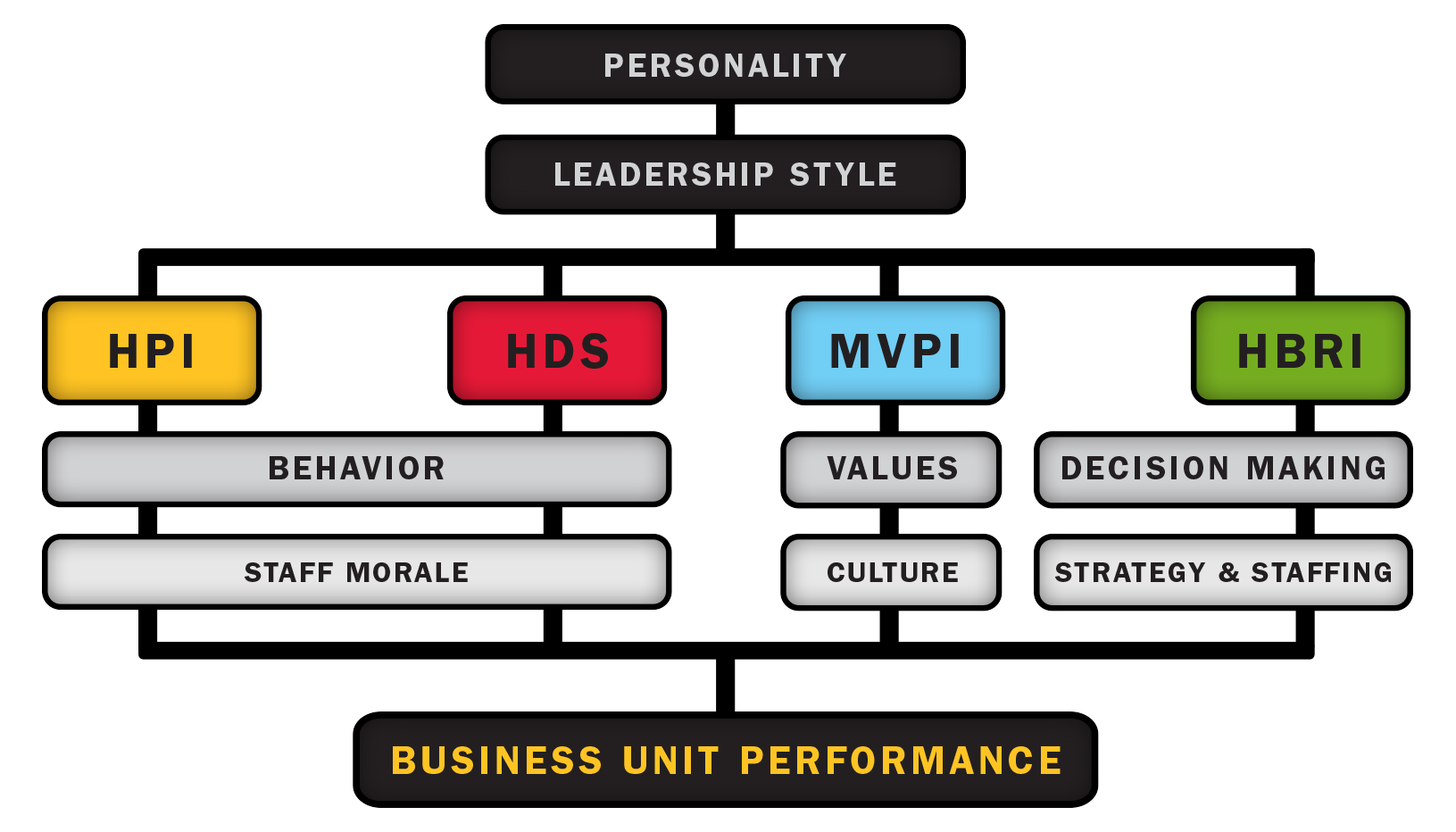We now know that personality predicts leadership style, and that leadership style predicts ratings of leader effectiveness. There are also some data showing that leadership style predicts business unit performance. So there is a kind of causal arrow going from personality through leadership style to the performance of the business unit of which a manager is in charge. Thus, we can use personality to predict business unit performance.That is an important finding in itself, but it also raises a question about the links. That is, how do leaders affect organizational outcomes? Our Leadership Value Chain suggests an answer.

This Figure shows the Leadership Value Chain. As can be seen, Personality drives Leadership Style. Leadership Style then branches into three distinct lines of influence. In the upper circuit, Leadership Style turns into behavior—how a leader treats his/her subordinates. This is the aspect of leadership that psychologists study. Behavior impacts staff morale, and morale impacts Business Unit Performance. Good morale yields positive business results defined in terms of productivity, low absenteeism and turnover, and high customer satisfaction; bad morale yields negative business results defined in the same terms. Finally, we can predict leader behavior pretty well using the HPI and HDS.
In the middle circuit of the Value Chain, Leadership Style symbolically expresses Leader Values. Leader Values concern the kinds of behavior that is rewarded and/or punished in the organization. Leader Values create the Culture of the organization, team, or business unit. Certain cultures (task orientation, profitability, competitiveness, customer service) yield positive business results, and other cultures (frivolity, hedonism, celebrity worship) yield negative business results. Finally, we can predict the culture a leader creates pretty well using the MVPI.
In the bottom circuit of the Value Chain, Leadership Style is reflected in the kinds of decisions a leader makes (Decision Making Style). The key decisions concern staffing (who should be on the bus?) and strategy (which way should the bus go?). Decision making then impacts business results. Economists and not psychologists have studied decision making and how it impacts business performance. Their research shows two things: a) decision making impacts business performance; and (b) decision making is constrained by limits on time and information. Because of the constraints, many decisions are wrong. The next question is, “What do leaders do after it appears that they have made a bad decision?” We believe this is where good judgment comes from—behaving appropriately in the face of evidence that a mistake has been made. Finally, we can predict decision making style using the HBRI.
This model explains some anomalies in the real life study of leadership. Although psychologists focus almost exclusively on the upper circuit, we all know successful organizations or teams that are led by tyrants and bullies (e.g., Bill Parcells, former head coach of the New York Giants, the New York Jets, and the Dallas Cowboys). This is a problem for the psychological study of leadership, but the problem goes away if you consider the entire value chain. A bully who makes good decisions about staffing and strategy, and who creates a climate of winning can still run a successful operation—and this is the key to the success of persons like Bill Parcells. Obviously we think he would have been even more successful if he had treated his people well.
Although the Leadership Value Chain seems obvious, we think it was first described in an American Psychologist article by Rob Kaiser of Kaplan Devries in Greensboro, NC, and Robert Hogan of Hogan Assessment Systems entitled “Leadership and the Fate of Organizations.”